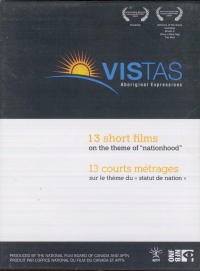| ________________
CM . . . . Volume XVII Number 41 . . . . June 24, 2011
The utilization of Aboriginal perspectives in school programming is a developing mandate in many educational jurisdictions across Canada. Many faculties and colleges of education are continuing to develop their teacher education programming that will allow teacher candidates the opportunity to explore Aboriginal perspectives and the possibilities for their integration. Many school divisions, districts and authorities are providing physical, pedagogical and curricular spaces in their schools within which the Canadian Aboriginal experience may be explored. Essential to the understanding of Canadian Aboriginal experience is the importance of Aboriginal perspectives and their relationship with their respective cultural identities. Aboriginal perspectives, the unique manifestations of knowledge, heritage, consciousness and tradition that may be associated with a particular Aboriginal group, provide opportunities for students, educational professionals, and the general public to explore the Canadian Aboriginal experience. The First Nations, Métis and Inuit peoples of Canada, buoyed by emergent nationalistic sentiments associated with their status as distinct peoples, have organized themselves with the stated intent to facilitate cultural revitalization amongst their people. The Aboriginal peoples of Canada have also organized themselves in an effort to facilitate cultural revitalization and to advance their concerns in areas such as nationhood. One of the issues that is regarded with heightened concern is that of mutual understanding between Aboriginal and non-Aboriginal peoples for the purposes of establishing and maintaining social harmony. To deal with this concern, access to media and other materials that explore the Canadian Aboriginal experience may be regarded as essential – especially for schools. Although this imperatives associated with the Aboriginal perspectives movement are becoming more appreciated in schools, resources that can assist in such exploration may be essential. Vistas - Aboriginal Expressions: 13 Short Films on the Theme of "Nationhood" provides some valuable insight into the Canadian Aboriginal experience. Incorporating various dramatic forms and recorded media, the 13 short films (each lasting approximately three minutes) explore Aboriginal peoples' connection with their respective lands, communities, and issues. The aesthetic value of these films may be reflected in the use of cultural imagery that is relevant to specific Aboriginal peoples such as the Métis, Inuit, and various First Nations. Because of the lack of dialogue in most of these films, the viewer is required to direct attention to the imagery and symbolism reflected in these films. The subject matter explored in these films includes issues such as Aboriginal status, life in remote communities, tension between Aboriginal and non-Aboriginal peoples, spirituality, and cultural appropriation. For those with little or no previous knowledge about Aboriginal peoples, these films can be valuable when supplementing discussions about the Canadian Aboriginal experience. Vistas would be of interest to classroom teachers and university instructors who explore Aboriginal issues, history or politics in their respective classes – senior high school students and those acquiring a post-secondary education. In recommending this resource, it should be noted that those intending to use it in a classroom should be aware that what is reflected in these films will require some supplementary elaboration on the social, historical and political contexts relevant to each film. For instance, the film Boxed In depicts a lady of mixed ancestry who is troubled about declaring an ethnic background in an application for a job, a depiction that may require discussion about the issues associated with asserting status as an Aboriginal person. Recommended. Frank Deer is an Assistant Professor in the Faculty of Education at the University of Manitoba.
To comment
on this title or this review, send mail to cm@umanitoba.ca.
Copyright © the Manitoba Library Association. Reproduction for personal
use is permitted only if this copyright notice is maintained. Any
other reproduction is prohibited without permission.
NEXT REVIEW |
TABLE OF CONTENTS FOR THIS ISSUE
- June 24, 2011.
AUTHORS |
TITLES |
MEDIA REVIEWS |
PROFILES |
BACK ISSUES |
SEARCH |
CMARCHIVE |
HOME |
